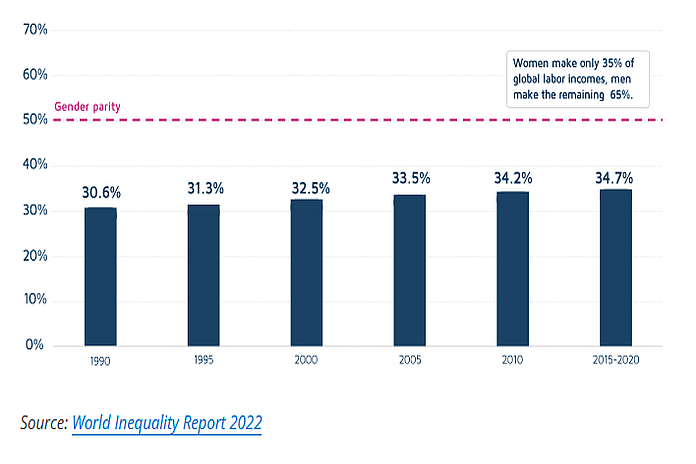We live in a society where information is widely accessible yet we lack basic knowledge regarding inequality. Governments may report economic growth every year but it remains unclear how this growth is divided among a country’s population – who benefits and who loses as a result of economic policies.
As a civilization that promotes democratic values, we have the right to possess such information. In addition to income and wealth disparities, improving our common capacity to evaluate and oversee other aspects of socioeconomic inequalities, such as gender and ecological inequities, is critical.
Data on inequality that is open to the public, accessible, and credible offers a worldwide benefit.
What is global inequality?
Inequality between people in different nations is referred to as global inequality.
The world’s wealthiest people acquire record levels of wealth while poor people become poorer. Based on information from a recent analysis, wealth and income inequality has been worsened by the COVID-19 epidemic.
World Inequality Report 2022
The World Inequality Report 2022 offers the most recent information on global disparity. The report was funded by the European Research Council along with several universities, research centers, statistics offices, and a number of other institutions. The data and analysis given in the report are based on the contributions of over 100 scientists from every continent who worked on the content for four years.
Before diving into the report, it is worth defining the term ‘purchasing power parity’ or PPP. This is a method that makes use of the prices of particular goods to compare the absolute purchasing power of currencies and the standard of living in various nations.
Drastic global income and wealth inequalities
On a worldwide scale, an adult’s average salary is US$23,380 per year. However, the authors of the paper point out that this masks significant differences across and within nations.
With regard to income, a person who falls within the top 10 percent wealthiest people on the planet will make US$122,100 on average while those in the bottom half will earn only US$3,920.
The disparity is much greater when considering wealth in terms of valuable assets and so forth in addition to income. The lower half of the population possesses only 2 percent of global wealth, while the wealthiest 10 percent hold 76 percent.
However, the authors of the research point out that significant disparity may persist even within nations. Although global inequalities have decreased over the last 20 years, economic inequality has grown in most nations.
Wealth inequality and carbon emissions
There is a connection between wealth disparities and differences in the impacts of climate change. Annually we produce 6.6 tons of CO2 equivalent per capita. The new data from the World Inequality Report indicates significant CO2 emissions inequalities on a global scale: the top 10 percent of emitters are accountable for over half of all emissions while the bottom half contributes only 12 percent.
Global gender inequalities
On the global scale, gender inequalities are still significant and many nations show very slow progress on their eradication.
The World Inequality Lab report states that, in general, women’s share of total labor income approached 30 percent in 1990 and in the period from 2015 to 2020 it stood at less than 35 percent.
The World Bank’s Women, Business, and the Law 2022 report shows that around 2.4 billion women of working age are denied fair economic opportunity, and 178 nations maintain legislative hurdles that hinder them from fully participating in the economy. Women have occupational restrictions in 86 nations, while 95 states do not ensure equal pay for equal labor.
Despite the devastating effect of the COVID-19 pandemic on the livelihoods of everyone, especially women, the paper states that only 23 nations changed their legislation in 2021 to take the necessary measures toward improving the economic involvement of women in eight areas: mobility, workplace, salary, marriage, motherhood, entrepreneurship, assets, and pensions. Legal gender equality exists in just 12 nations that are members of the OECD.
It is interesting to note that 118 economies throughout the globe provide new mothers with 14 weeks of paid leave.
Global inequalities seem to be thriving, affecting millions of women and the poor, with no serious prospect of improvement anytime soon. According to the World Inequality Report 2022, the richest 10 percent of the entire population on Earth possesses over 50 percent of the total wealth while the poorest account for only for 8 percent.
Experts point out that there is much more that can be done to reduce inequality and that inequality is always a political choice which means that improved policy design could lead to more equitable paths of development.







